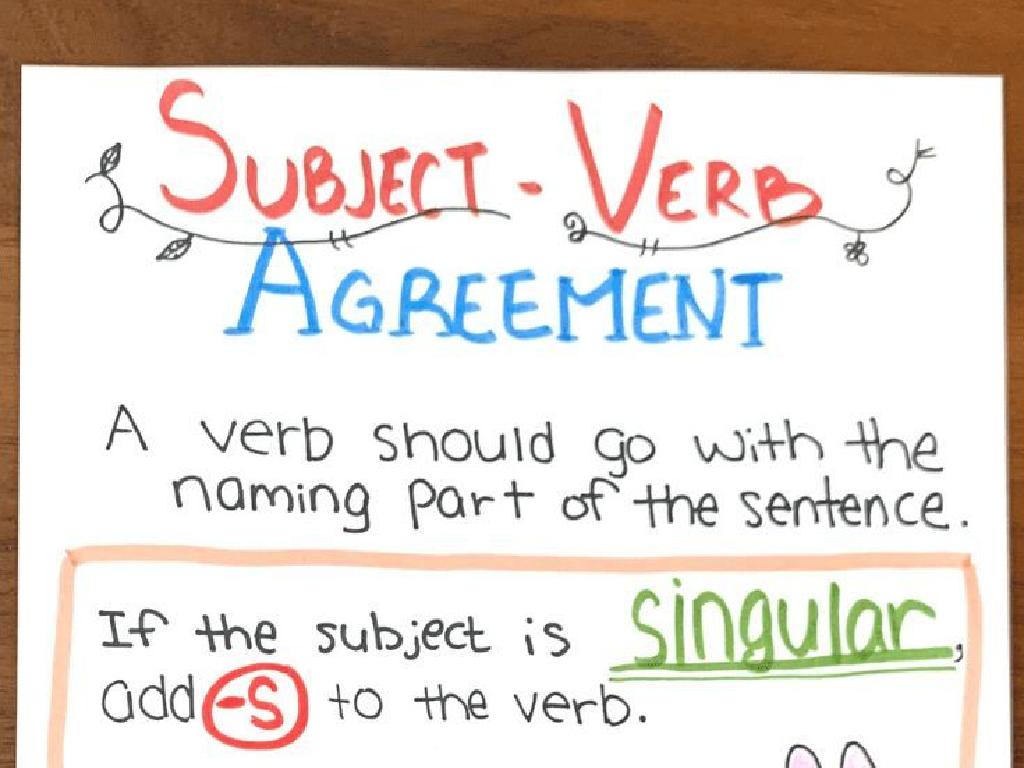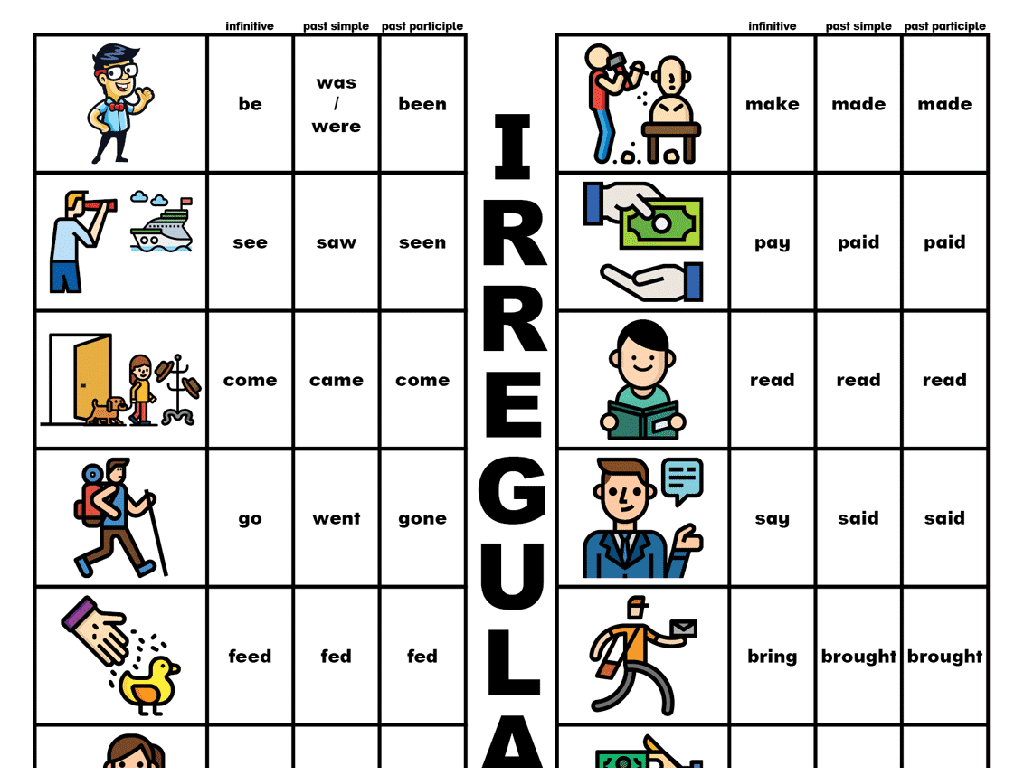Choose The Multiples Of A Given Number Up To 12
Subject: Math
Grade: Fourth grade
Topic: Factors And Multiples
Please LOG IN to download the presentation. Access is available to registered users only.
View More Content
Today’s Adventure: Choosing Multiples!
– What are multiples?
– Multiples are results of multiplying a number by integers.
– Multiples of numbers up to 12
– For example, multiples of 3 are 3, 6, 9, 12, 15, etc.
– The role of multiples in math
– They help in solving division, fractions, and LCM problems.
– Multiples in everyday life
– Used in situations like arranging chairs in rows or sharing equally.
|
This slide introduces the concept of multiples and their significance both in mathematics and in real-world scenarios. Begin by explaining that multiples are what we get when we multiply a number by 1, 2, 3, and so on. Use visual aids or objects to demonstrate the concept of multiples with numbers up to 12. Discuss how understanding multiples can simplify various mathematical operations such as division and finding the least common multiple (LCM). Relate the concept to everyday life by giving examples such as dividing treats among friends or organizing objects in equal groups. Encourage students to think of other examples where they use multiples in their daily activities.
Understanding Multiples
– What is a multiple?
– A multiple is a product of a number and any whole number.
– Multiples of 3 example
– For example: 3, 6, 9, 12, 15, 18…
– Multiples as number line steps
– Imagine hopping along a number line: 3, 6, 9, 12…
– Finding multiples up to 12
|
This slide introduces the concept of multiples to fourth-grade students. Begin by defining a multiple as the product of a number and any whole number, ensuring to clarify that a product means the result of multiplication. Use multiples of 3 as a concrete example to help students visualize the concept. Explain that finding multiples is like taking steps on a number line, where each step is the size of the number itself. Emphasize that we are focusing on multiples up to 12, which is relevant for their learning level. Encourage students to think of multiples as groups of items, such as chairs in rows, to make the concept more relatable. The goal is for students to be able to identify and list multiples of given numbers by the end of the lesson.
Finding Multiples of Numbers
– Multiples: result of multiplying a number
– Example with 4: 4, 8, 12, 16, …
– Multiply 4 by 1, 2, 3, etc. to get multiples
– Let’s find multiples of 5
– Together, we’ll calculate 5×1, 5×2, up to 5×5
– Practice finding first five multiples
|
This slide introduces the concept of finding multiples of a given number, which is a fundamental aspect of understanding factors and multiples in mathematics. Start by explaining that multiples are what we get when we multiply a number by 1, 2, 3, and so on. Use the number 4 as an example to show this process in action. Then, engage the class with a practice activity to find the first five multiples of 5. This will help solidify their understanding through hands-on learning. Encourage students to use their multiplication skills and to check their answers with peers. The goal is for students to become comfortable with identifying multiples and to recognize patterns within multiplication tables.
Multiples in Patterns
– Multiples create patterns
– Weekly patterns with multiples of 7
– There are 7 days in a week, so 7, 14, 21, 28 are multiples of 7
– Multiples of 10 in patterns
– Multiples of 10 are easy to spot: 10, 20, 30, 40…
– Activity: Find the 10s pattern
– Look for items in groups of 10, like fingers or crayons
|
This slide introduces the concept of patterns formed by multiples. Start by explaining that multiples are what we get when we multiply a number by 1, 2, 3, and so on. Show how these multiples form a pattern. For example, with the number 7, which relates to the days of the week, the pattern is 7, 14, 21, 28, etc. Then, move on to multiples of 10, which are easily recognizable because they end in zero. For the activity, have students identify objects that come in multiples of 10, such as packs of crayons or counting their own fingers and toes. This will help them understand and recognize patterns in multiples in a fun and interactive way.
Exploring Multiples Up to 12
– Review a multiples chart up to 12
– Observe patterns in the multiples
– Look for repeated numbers or sequences
– Group activity: Find missing multiples
– Each group gets a chart with blanks to complete
– Discuss patterns found in activity
– Share discoveries with the class
|
This slide is designed to help students understand the concept of multiples through visual and interactive learning. Start by displaying a chart of multiples up to 12 and guide the students to observe any patterns, such as the repetition of numbers or how every multiple of a number is that number times an integer. For the group activity, provide charts with some multiples missing and ask the students to fill in the blanks. This encourages collaboration and application of their understanding of multiples. After the activity, facilitate a discussion where students can share the patterns they noticed and reinforce their learning. This exercise will help solidify their grasp of multiples and prepare them for more complex multiplication and division concepts.
Choosing the Right Multiples
– Multiples from multiplication facts
– Remember, multiples are what we get when we multiply the number by 1,2,3,…,12
– Example: Multiples of 6
– Is 18, 22, 24, 29 a multiple of 6? Only 18 and 24 are!
– Eliminate non-multiples
– If a number can’t be divided evenly by 6, it’s not a multiple
– Quick Quiz: Find the multiples
– We’ll do a fun quiz to pick out multiples of different numbers
|
This slide is aimed at helping students understand how to identify multiples of a given number using their multiplication skills. Start by explaining that multiples are the product of the given number and any whole number. Use 6 as an example and show 18 and 24 as its multiples, while 22 and 29 are not because they can’t be divided evenly by 6. To reinforce the concept, conduct a quick quiz where students identify multiples of different numbers up to 12. This interactive activity will help solidify their understanding of multiples in a fun and engaging way.
Real-Life Multiples: Seeing Patterns Everywhere
– Multiples in daily life
– Like 12 eggs in a carton or 7 days in a week
– Multiples make grouping simple
– It’s easier to count items in groups, like pencils in a pack
– Discuss real-life multiples
– Think about when you’ve seen multiples. Maybe in a book or playing a game?
|
This slide aims to help students recognize the concept of multiples in their everyday lives, making the abstract concept more concrete. By relating to familiar items like egg cartons or days of the week, students can see how multiples are not just a mathematical idea but a practical tool for organizing and counting. Encourage students to share their own experiences with multiples, whether it’s helping at a grocery store, dividing snacks among friends, or noticing patterns in nature. This discussion can lead to a deeper understanding of the importance of multiples in both math and daily life. Prepare to facilitate a conversation where students can engage and learn from each other’s observations.
Class Activity: Multiples Scavenger Hunt
– Explore the classroom for multiples
– Find objects in multiples of a number
– If we’re looking for multiples of 4, we might find 4 windows or 8 markers.
– Team up and list your findings
– Present your multiples to the class
|
This interactive activity is designed to help students recognize and understand multiples in a fun and engaging way. Divide the class into small groups and assign each a different number between 1 and 12. Students will then search the classroom for objects that come in multiples of their assigned number. For example, a group assigned the number 4 might list items such as ‘4 table legs’ or ’12 crayons’ (as 12 is also a multiple of 4). After the scavenger hunt, each group will present their findings, explaining why the quantities are multiples of their number. This activity not only reinforces the concept of multiples but also encourages teamwork and presentation skills. Possible variations of the activity could include finding multiples in a book, using sticky notes to label found multiples, or drawing representations of the multiples discovered.
Multiples Mastery: Homework Assignment
– Congratulations on learning multiples!
– Homework: Make a multiples poster
– Use colors and images to show multiples of your chosen number
– Choose a number up to 12
– Your favorite number can be any number from 1 to 12
– Practice finding multiples regularly
– The more you practice, the better you’ll get at spotting multiples!
|
This slide wraps up the lesson on multiples and transitions students into a creative homework assignment. The task is to create a visually appealing poster that displays the multiples of their favorite number up to 12. This activity reinforces their understanding of the concept of multiples and allows them to apply it in a fun and personal way. Encourage students to be creative with their posters, using colors, drawings, or even real objects to represent the multiples. Remind them that regular practice is key to becoming proficient in identifying multiples. In the next class, provide time for students to share their posters and explain how they found the multiples, which will also serve as a review of the lesson.






